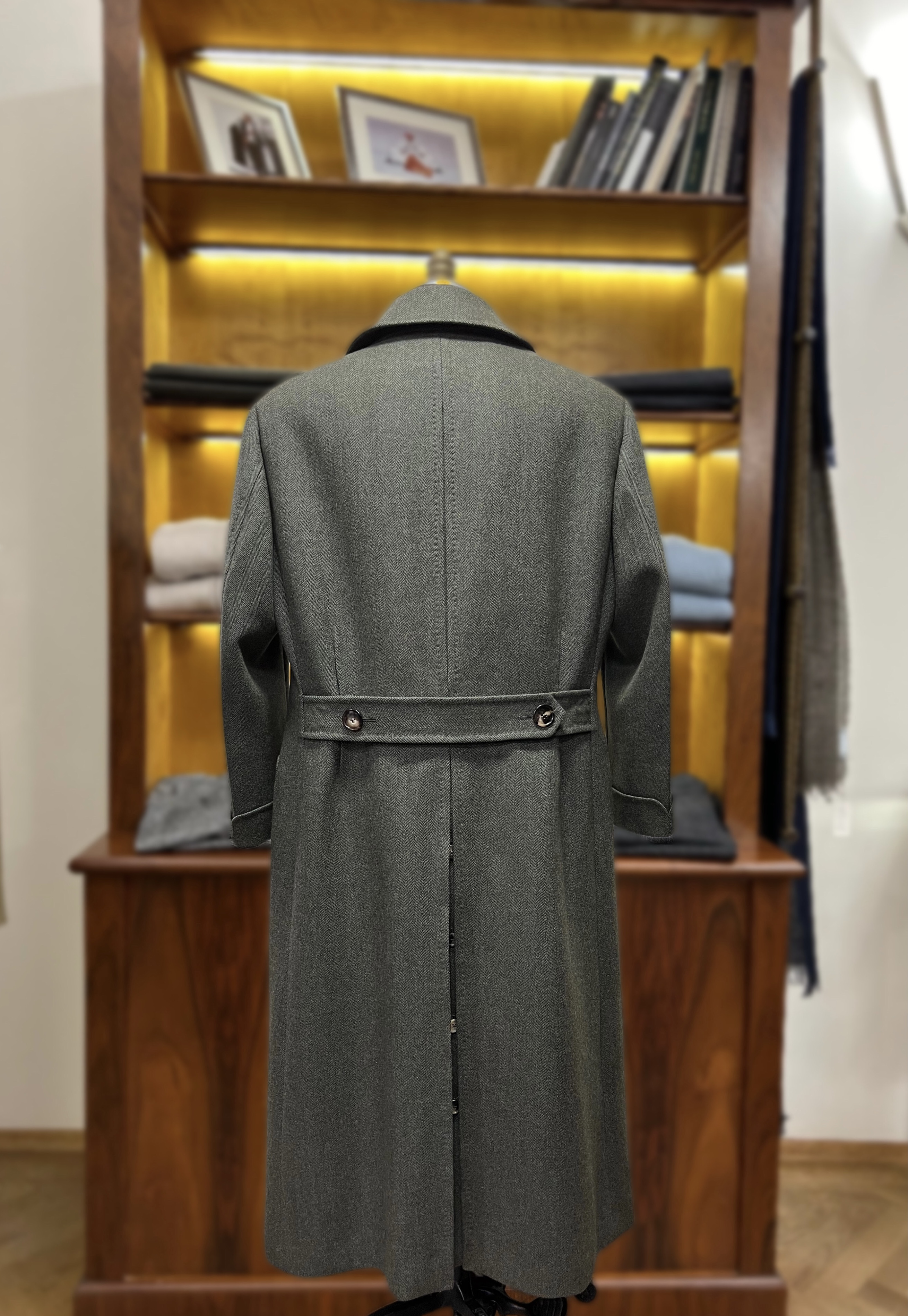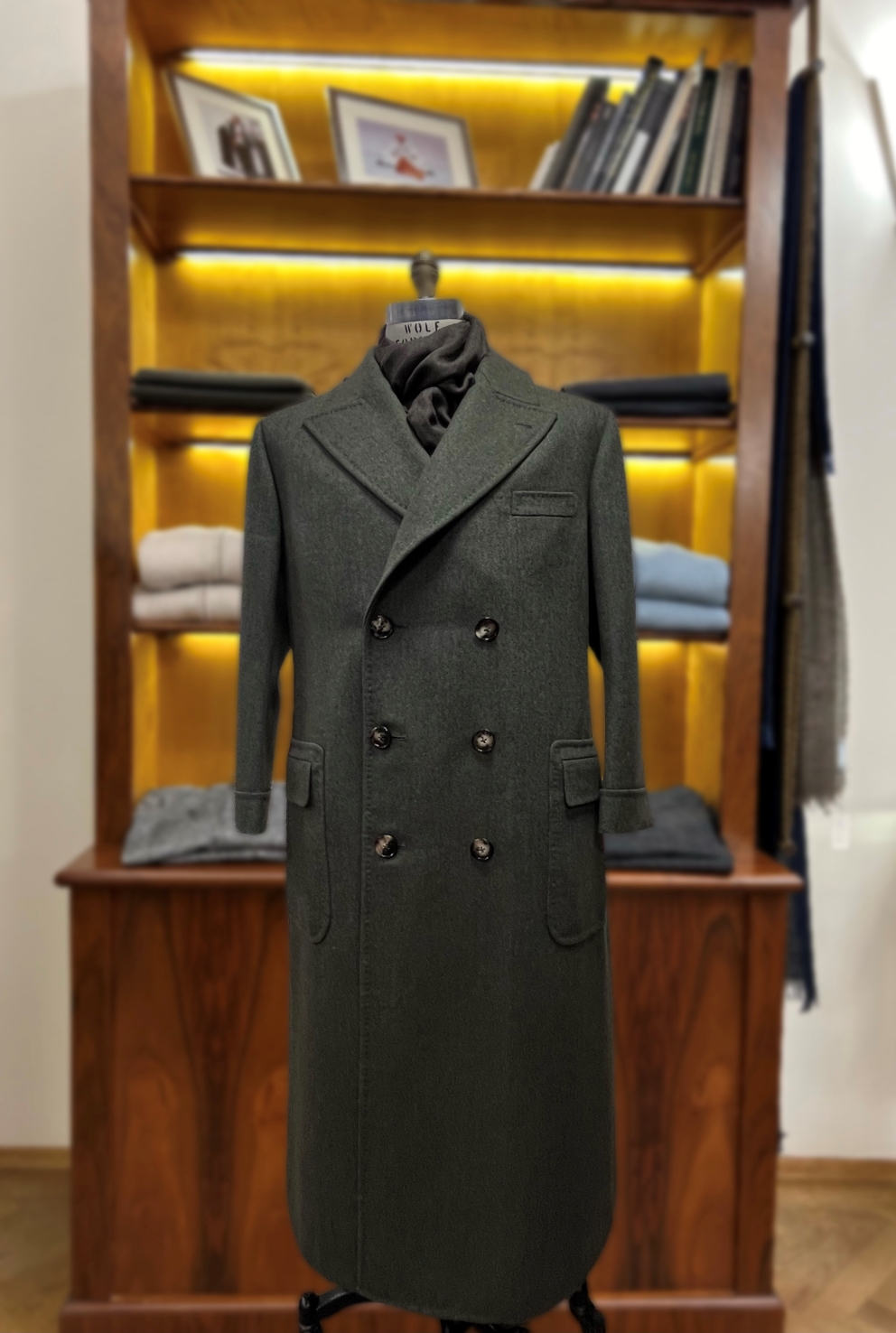The polo coat, as it’s name suggests, was originally designed to keep polo players warm before, during, and after matches. Polo had been brought back to Britain by cavalry officers serving in India, where the modern version of the game had been introduced in Manipur around the middle of the nineteenth century.
The weather in northern Europe and the eastern seaboard of the US, where the game quickly caught on, was not as balmy as in India and hence the necessity of the polo ‘ wait’ coat, which was first mentioned in 1910.
Consequently, it was an oversize, button less, rap over coat with a self fabric belt; it was, to all intents and purposes, a huge dressing gown but with an Ulster collar to keep the neck cosy. It was made of camel hair, expensive, but thick, extremely warm and relatively lightweight.
From the start polo was an extremely glamorous game. Just due to the costs involved of keeping so many ponies it was the preserve of wealthy plutocrats and royalty. Apart from the whole lifestyle that grew up around the tournaments it resulted in the creation of some iconic pieces of menswear: the button-down collar, the polo shirt and even the Reverso watch from Jaeger-LeCoultre.
The 1920’s saw the rise of American polo legend Tommy Hitchcock. When he wore his polo coat at the Meadowbrook Polo Club on Long Island, his younger brother liked it so much he commissioned one to be made for himself, that he wore while attending Yale University.
Brooks Brothers were largely credited with introducing the polo coat for every day use, and that’s how the Americans gave this British garment its final form. The American version has somethings in common with the long Guards coats: the generous volumes, the pleats on the back to name just two, but Brooks Brothers added some of the styling details of the original polo coat which gave their version a glamorous twist. Some of the design details of the modern polo coat are pretty standard: the double-breasted closure, the turn-back cuffs, the post-box pockets as well as the set-in sleeves. The back has a number of features: the Martingale (half-belt) back, an action-pleat in the upper back, a long buttoned box-pleat vent and then to finish an Ulster collar. But the most typical characteristic is the dropped front buttoning that elongates the lapel line. This lower buttoning gives the coat an emblematic American style personified by Humphrey Bogart.
Apart from being quite expensive camel hair does not wear very well. To maintain the warmth while increasing the durability, and reducing the cost, camel hair and wool blends were introduced. It was in these more practical fabrics that the polo coat gained popularity among university students in Princeton and Yale in the 1920s and 30s, and quickly became a must-have for the Ivy League boys. The beige colour made it easy to mix it with different trousers and jackets whether casual or more formal.
The whole allure of the polo lifestyle, as captured in the novels of F. Scott Fitzgerald, set a trend that is still with us today; in fact Ralph Lauren built his whole business around it! Through the decades many style icons have sported polo coats. Hollywood actor and polo player Will Rogers, English play-write Sir Noël Coward, the Duke of Windsor, Gianni Agnelli and, much later, Richard Gere are a few of the famous aficionados of this glamorous garment.
In the past few years dressing has become a more casual affair, but for lovers of beautiful tailoring the polo coat is still as coveted as ever. I was delighted to be commissioned by one of our clients to make him a polo coat and we created our version honoring it’s illustrious history. While not sticking firmly to the rules, the fabric choice being an obvious variation, the generosity of volume, the styling details and the overall luxury keep our polo coat firmly rooted in the old school of glamorous menswear.






